Market Signals Summary:
All iM US market macro models are in the stock market as is the australian MAC-AU. The recession indicators iM-LLI and iM-BCIg do not signal a recession. The bond market model avoids high beta (long) bonds, and the yield curve is flattening and a buy FLAT was generated 2/21/2020. The Gold Coppock and iM-Gold Timer remains invested in gold, however the silver model is in cash.
Stock-markets:
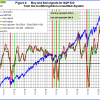 The MAC-US model switched into the markets on 2/26/2019. The sell-spread (red line) is above last week’s value and needs to move below zero to generate a sell signal.
The MAC-US model switched into the markets on 2/26/2019. The sell-spread (red line) is above last week’s value and needs to move below zero to generate a sell signal.
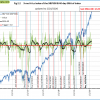 The 3-mo Hi-Lo Index Index of the S&P500 is below last week’s level at 13.69% (last 14.01%), and is invested in the stock market since 10/22/2019.
The 3-mo Hi-Lo Index Index of the S&P500 is below last week’s level at 13.69% (last 14.01%), and is invested in the stock market since 10/22/2019.
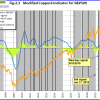 The Coppock indicator for the S&P500 entered the market on 5/9/2019 and is invested. This indicator is described here.
The Coppock indicator for the S&P500 entered the market on 5/9/2019 and is invested. This indicator is described here.
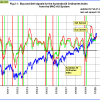 The MAC-AU model is invested in the markets. The sell-spread (red line) is above last week’s value and needs to move below zero to generate a sell signal.
The MAC-AU model is invested in the markets. The sell-spread (red line) is above last week’s value and needs to move below zero to generate a sell signal.
This model and its application is described in MAC-Australia: A Moving Average Crossover System for Superannuation Asset Allocations.
Recession:
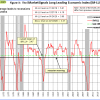 The current level of iM-LLI is plus 3.47 and is below last week’s 3.61, hence this indicator signals that a recession is unlikely to begin during the next 8 months.
The current level of iM-LLI is plus 3.47 and is below last week’s 3.61, hence this indicator signals that a recession is unlikely to begin during the next 8 months.
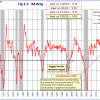 Figure 3.1 shows the recession indicator iM-BCIg up from last week’s level. An imminent recession is not signaled .
Figure 3.1 shows the recession indicator iM-BCIg up from last week’s level. An imminent recession is not signaled .
Please also refer to the BCI page
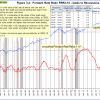 The Forward Rate Ratio between the 2-year and 10-year U.S. Treasury yields (FRR2-10) remains near last week’s level and is not signaling a recession.
The Forward Rate Ratio between the 2-year and 10-year U.S. Treasury yields (FRR2-10) remains near last week’s level and is not signaling a recession.
A description of this indicator can be found here.
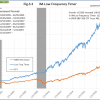 The iM-Low Frequency Timer is back in the markets since 1/22/2019.
The iM-Low Frequency Timer is back in the markets since 1/22/2019.
A description of this indicator can be found here.

Leave a Reply
You must be logged in to post a comment.